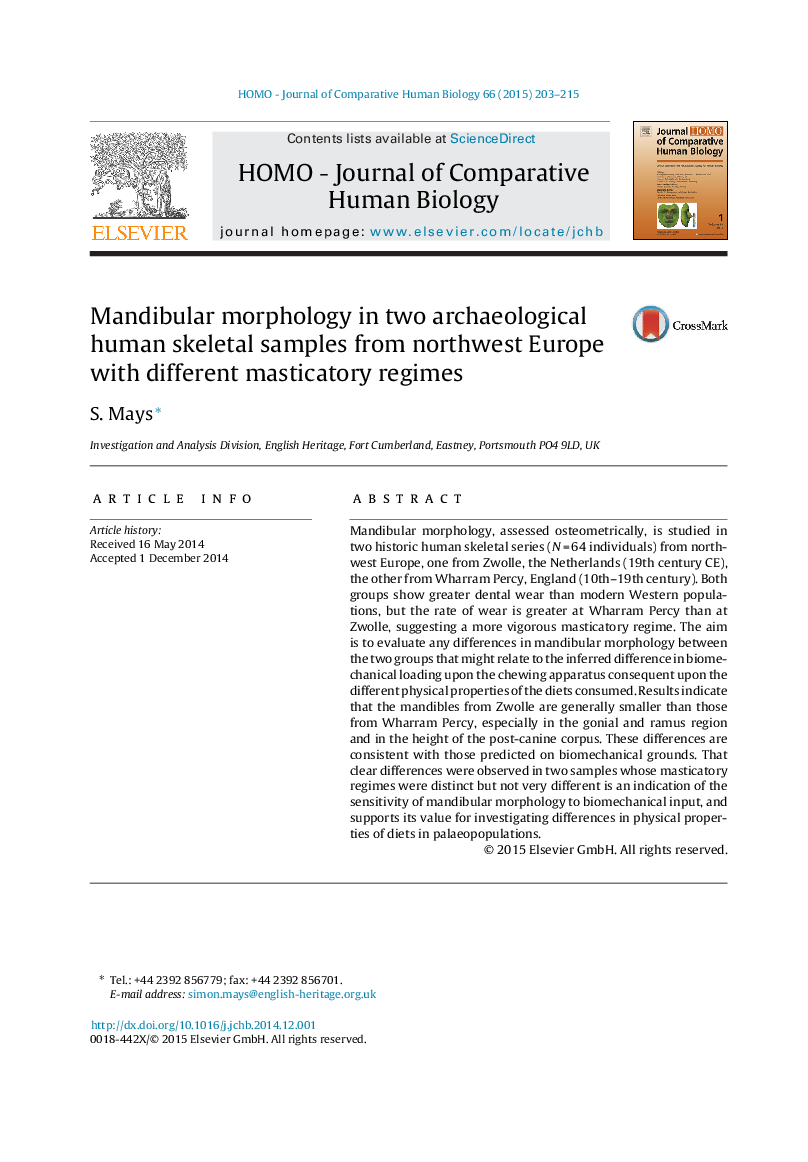| Article ID | Journal | Published Year | Pages | File Type |
|---|---|---|---|---|
| 100111 | HOMO - Journal of Comparative Human Biology | 2015 | 13 Pages |
Mandibular morphology, assessed osteometrically, is studied in two historic human skeletal series (N = 64 individuals) from northwest Europe, one from Zwolle, the Netherlands (19th century CE), the other from Wharram Percy, England (10th–19th century). Both groups show greater dental wear than modern Western populations, but the rate of wear is greater at Wharram Percy than at Zwolle, suggesting a more vigorous masticatory regime. The aim is to evaluate any differences in mandibular morphology between the two groups that might relate to the inferred difference in biomechanical loading upon the chewing apparatus consequent upon the different physical properties of the diets consumed. Results indicate that the mandibles from Zwolle are generally smaller than those from Wharram Percy, especially in the gonial and ramus region and in the height of the post-canine corpus. These differences are consistent with those predicted on biomechanical grounds. That clear differences were observed in two samples whose masticatory regimes were distinct but not very different is an indication of the sensitivity of mandibular morphology to biomechanical input, and supports its value for investigating differences in physical properties of diets in palaeopopulations.
